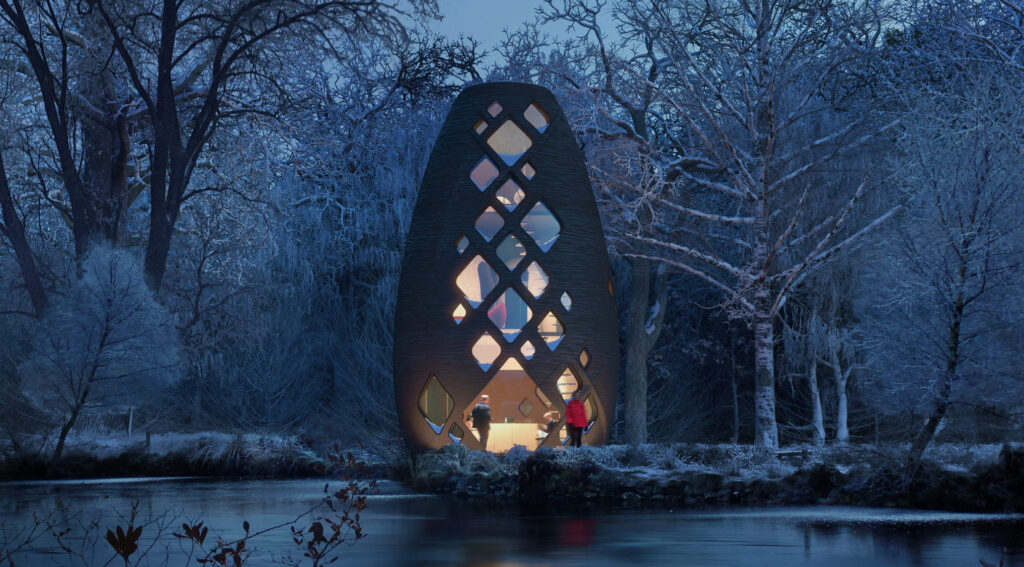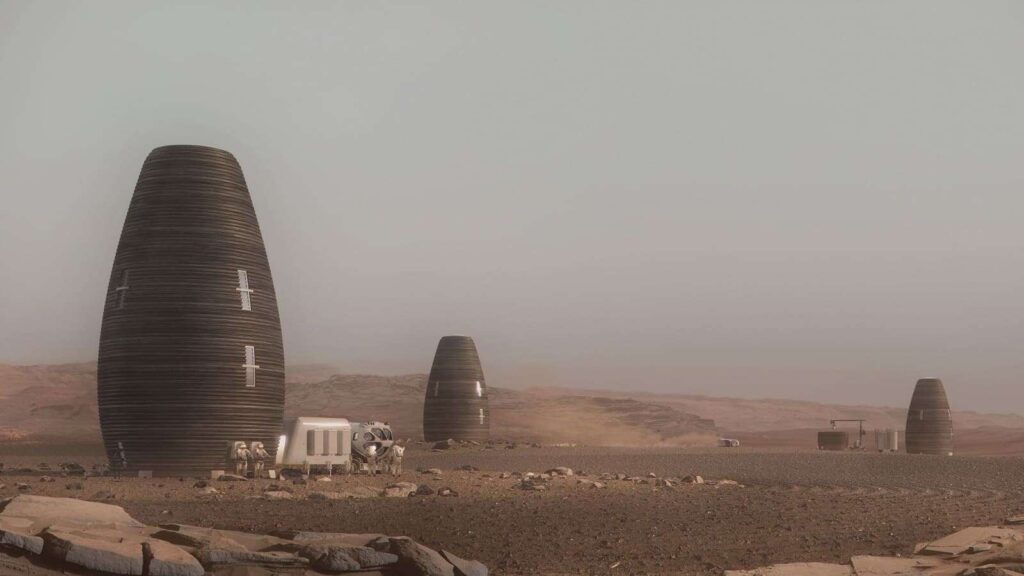Studio AI Space Factory has designed a Martian beehive house that can be 3D-printed.
As part of NASA’s 3D Printed Habitat Challenge, the vertical dwelling was called the Marsha Project of which NASA has endorsed.
As many as four astronauts can be accommodated in each of the hives, and the structures can be 3D-printed in situ using basalt and renewable bioplastics found on the surface of Mars. Because of Marsha’s vertical design, it does not need to traverse unfamiliar terrain, so it can print while stationary, alleviating Mars’ atmospheric constraints.

Guests wanting to experience living on another planet can take part in an AI Spacefactory eco-retreat this spring, where a 3D-printed Mars habitat will be brought to Earth. According to Emily Eastman
MARSHA, a 3D-printed habitat that could be built on the moon or Mars and sustain human life, was the winner of US$500,000 from NASA’s multiplanetary architecture and technology design agency, AI Spacefactory.
Nevertheless, the firm says, it really realized its product could also be used on Earth when designing homes for Mars.
AI Spacefactory has announced that the world’s first 3D-printed Martian eco-retreat, TERA, will be built in the Hudson River woods in Upstate New York. Prices range from US$175 to US$500 a night.
The tagline of TERA is Built for Space, Developed for Earth.
Artificial Intelligence Spacefactory describes the habitat as an “unique eco-home with high-tech, luxury features”. Anyone interested in seeing how sustainable living will be in the future will be able to watch it every night.
This project claims that it “could transform the way we build on Earth – and perhaps even save the planet”.
“Biopolymer basalt composite” – a material developed from crops like corn and sugar cane – will be used to produce TERA. NASA says the material is 50% stronger and more durable than concrete.
According to TERA-1, the company says it is a result of “how the lessons we learned through MARSHA meet the energy of the Hudson River region in upstate New York”.

A two-story timber structure is covered by an exterior 3D printed shell to conceal a structurally independent interior on this wooded site, the company says. With views of the Hudson River and its untouched terrain, researchers had specific dimensions and angles to work with.
There are multiple points where the exterior shell celebrates its intersection with the natural environment and with the hidden structure in the interior.
AI SpaceFactory is going to 3D print TERA on site and retrofit it with its treehouse-style interior (made from birch and poplar) so that it can be ready for its first guests in March 2020. As well as a spiral staircase, a kitchen, bathroom, and sleep loft, the sanctum will include a telescope, greywater recycling, and LED lighting.
The AI SpaceFactory was founded by architect David Malott in 2017 with the aim of developing long-term missions to Mars and revolutionizing the architecture of Earth.
Crowd-funding the project on Indiegogo has raised just over £56,000 so far. TERA-1 will be available for one year, according to a FAQ section on the website. TERA-1 is set to be recycled and new TERAs will be created everywhere.
We will strive to create highly autonomous structures that are highly functional, autonomous, and human-rated with each TERA,” TERA states. “This knowledge will be used to inform the design and construction of sustainable earthly structures, and ultimately create a pathway for human life on Mars”.
The Marsha dwelling

Living spaces are housed in an inner shell, which is anchored to the surface of the planet (to protect it from strong winds). The outer shell serves as a protected shell. Wet labs are located on the lower level, kitchen and dry labs are on the upper level, and recreation is on the top level. Private sleeping areas are offered within semi-enclosed rooms.
Skylights fill the top of the dwelling with water and filter light down as it rises.
The next step of the project will be the creation of a 1:3 scale prototype of the Marsha dwelling.




